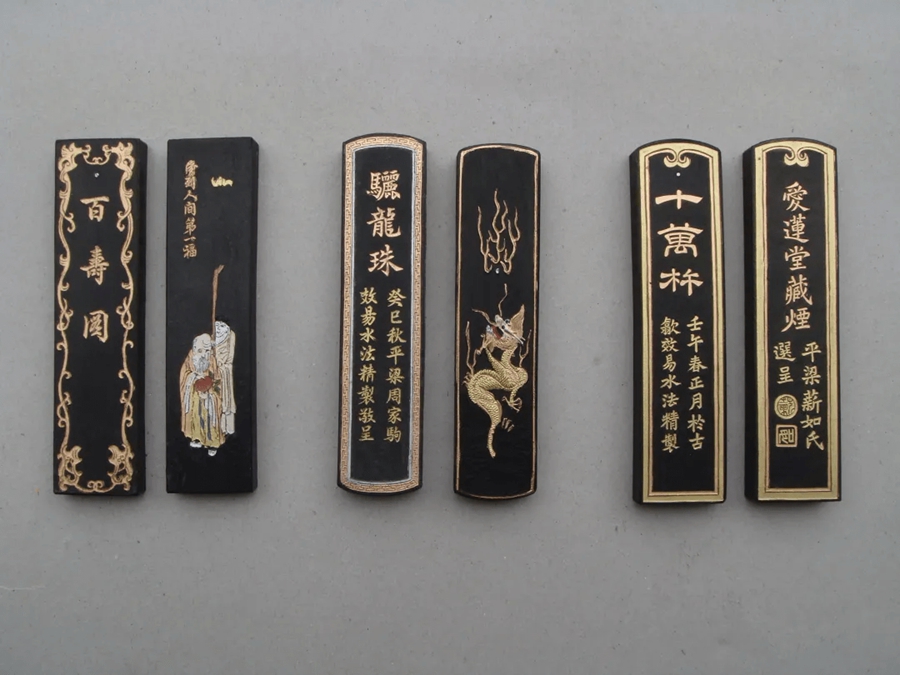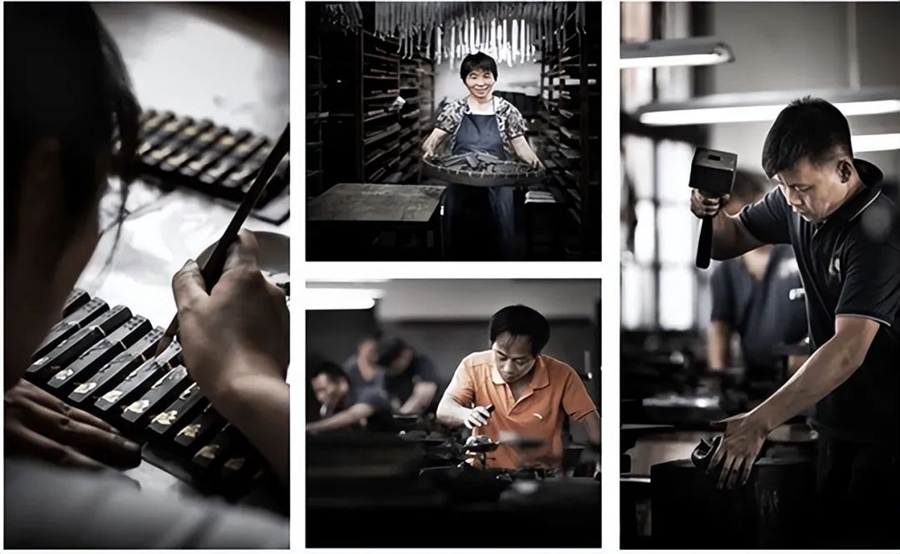The ink sticks produced in Shexian county, known as Huizhou in Song Dynasty (960-1279), have a rich history spanning over 1,000 years. The subject is one of China's Four Treasures of Study – the other three being brushes, paper and ink stones – which are venerated by artists and collectors alike.

The Huizhou ink stick is smooth – both in painting and calligraphy – and it stays indelible for an extraordinary time. [Photo/WeChat ID: gh_fddd8e6b4139]
The production of the Huizhou ink stick was developed in Qing Dynasty (1644-1911) and the Earth Ink Stick made by Hu Kaiwen, one of the great ink stick masters, is best known to many enthusiasts around the world. In 1915, it was sent to the Panama World Exposition by the National Agricultural and Commercial Department and was awarded a gold medal.

The traditional ink-making process includes 11 painstaking steps, such as batching, making, drying and gilding. [Photo/WeChat ID: gh_fddd8e6b4139]
There are more than 100 ink stick making artisans at the Laohu Kaiwen ink stick artisan workshop in Shexian county. The ink sticks made by the artisans there boast light, pure and solid qualities with a scented smell. The production of Huizhou ink sticks was included in the first national intangible cultural heritage list of items in 2006.

